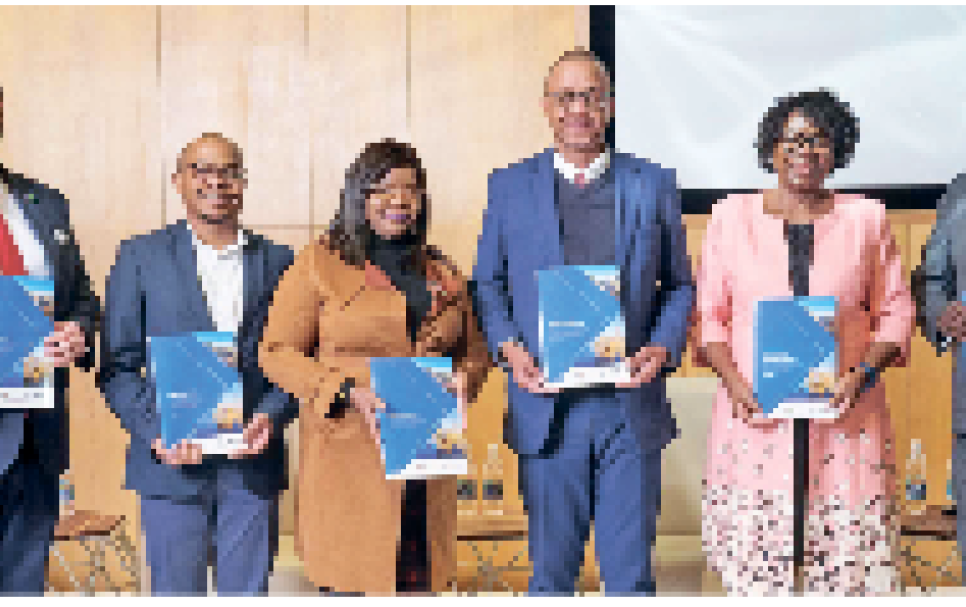Namibia’s Foreign Direct Investment booming

• By Jeremiah Ndjoze
Over the past four years, Namibia has attracted over N$114.9 billion in net Foreign Direct Investment (FDI) inflows, including N$56 billion into sectors beyond oil and gas. This was said by International Relations and Trade Deputy Minister, Jenelly Matundu, who made these remarks while officiating at the inaugural Foreign Direct Investment Report launch, in Windhoek, this week.
This surge in FDI inflows, according to Matundu, reflects increasing investor confidence and Namibia’s strengthening economic fundamentals. “More importantly, it highlights a growing global recognition of Namibia’s strategic assets, our natural endowments, our commitment to good governance and policy stability, and our position at the crossroads of African and global markets,” Matundu said. “Namibia Berries in Divundu is exporting premium produce to Europe and Asia while creating hundreds of jobs. The Cleanergy Solutions Namibia green hydrogen pilot project in Walvis Bay is positioning Namibia as a continental leader in the energy transition. Inactive mines have resumed operations, and new ventures are taking root across regions, offering renewed hope and opportunity to our people,” she added.
The minister however stressed that the report also calls for introspection and informs Namibia that nearly 70% of FDI remains focused on capital-intensive and resource-seeking investments. She maintains that while these investments are critical for revenue and foreign reserves, they do not address the country’s most urgent development needs, such as creating employment at scale and building value chains that retain more benefits locally.
“To this end, we must now focus on attracting and facilitating FDI in labour-intensive and innovation-driven sectors such as tourism and hospitality, agribusiness and agro-processing, the digital and creative economy, light manufacturing, and logistics. These sectors offer the greatest potential for job creation, skills development, and long-term sustainability,” Matundu reiterated.
She reaffirmed her ministry’s commitment to championing economic diplomacy that aligns with this vision. She also revealed that the ministry is working closely with the Namibia Investment Promotion and Development Board (NIPDB) and Namibia’s missions abroad to ensure that Namibia’s investment narrative is clearly and consistently communicated, backed by facts, framed by opportunity, and amplified through strategic international platforms.
“As we position ourselves within the African Continental Free Trade Area (AfCFTA) and forge deeper ties with both traditional and emerging partners, our objective is clear.” She said these are to: “to unlock meaningful, high-quality investment that supports our national development goals and uplifts the livelihoods of all Namibians.
“We must also address the internal barriers to investment that are highlighted in this report. Issues such as access to land, slow permit processing, policy finalisation, and the alignment of skills development with investment needs require urgent, coordinated action.” Matundu noted that if Namibia is to remain competitive in a rapidly shifting global investment landscape, the country must move with urgency and unity.
NAM STANDS OUT
Speaking at the same occasion, Deputy Governor of the Bank of Namibia, Ebson Uanguta maintained that in an increasingly competitive global landscape for attracting investment, Namibia’s FDI journey stands out.
Since gaining independence in 1990, the country has taken bold strides to create a conducive environment for foreign investors. A key early milestone was the enactment of the Foreign Investment Act of 1990, which laid the foundation for an investor- friendly climate supported by a robust financial system. Said Uanguta: “Although initial FDI inflows were modest, a major turning point came in 1996 with the introduction of the Export Processing Zone (EPZ) regime. This policy offered attractive incentives to export-oriented manufacturers and contributed to a significant increase in FDI.”
According to Uanguta, between 1998 and 2008, Namibia recorded approximately N$25.7 billion in net FDI inflows, largely in the form of equity financing for projects in the manufacturing sector. He says this period marked a turning point, proving that clear policy direction and investor confidence can unlock real economic opportunity. “While there was a temporary decline in FDI during 2019 and 2020, Namibia has experienced a strong rebound since 2021. From that year onward, cumulative net FDI inflows reached N$114.9 billion. This is driven largely by significant hydrocarbon discoveries in the Orange Basin and an increasingly favourable investment climate,” he said. “This resurgence reflects the impact of the Government’s strategic efforts to attract, promote, and facilitate high-quality investment, including through the establishment of the Namibia Investment Promotion and Development Board (NIPDB).
This publication was produced through the partnership of the Bank of Namibia and the NIPDB.
- 142 views










Comments